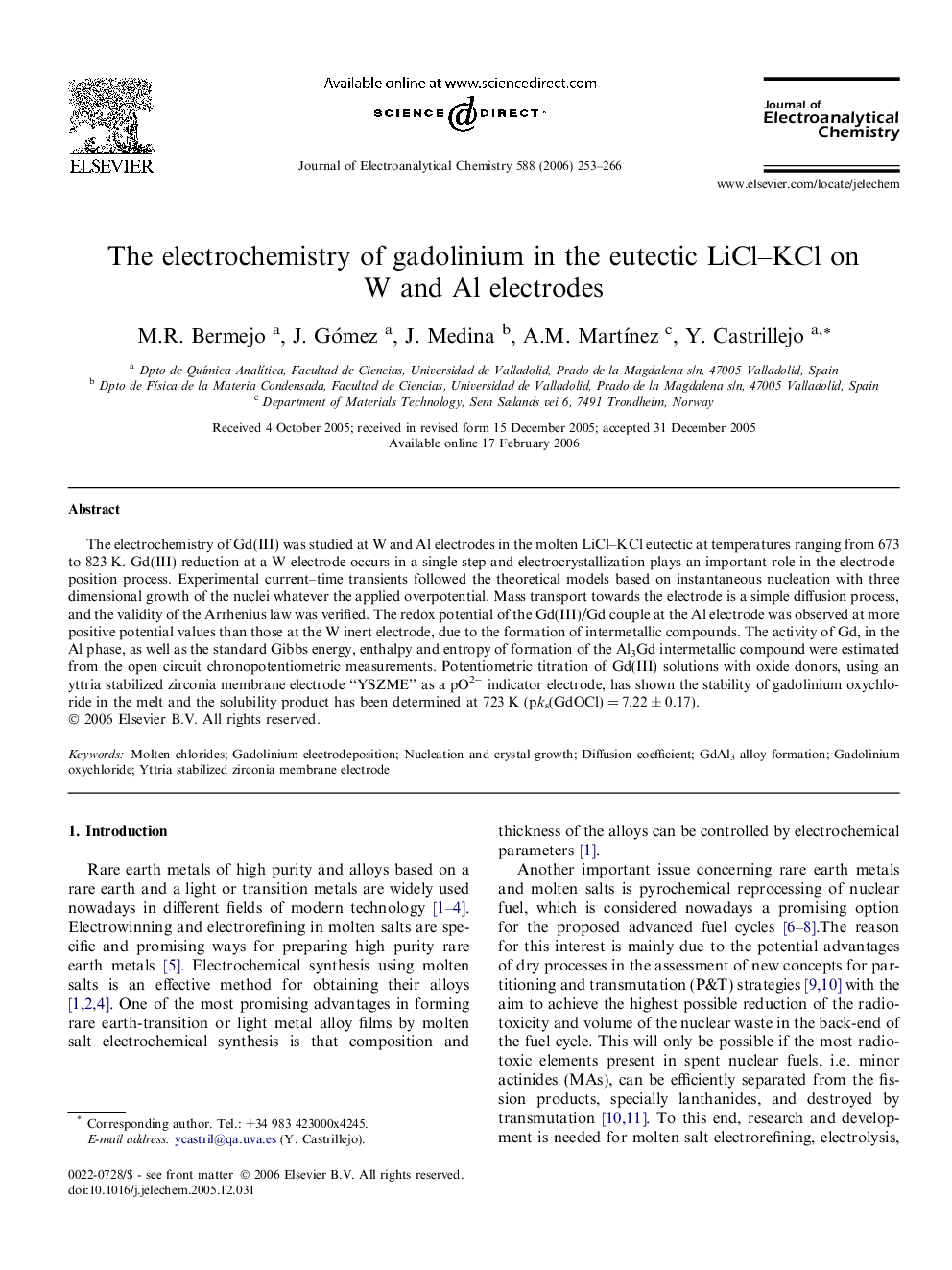| Article ID | Journal | Published Year | Pages | File Type |
|---|---|---|---|---|
| 221414 | Journal of Electroanalytical Chemistry | 2006 | 14 Pages |
The electrochemistry of Gd(III) was studied at W and Al electrodes in the molten LiCl–KCl eutectic at temperatures ranging from 673 to 823 K. Gd(III) reduction at a W electrode occurs in a single step and electrocrystallization plays an important role in the electrodeposition process. Experimental current–time transients followed the theoretical models based on instantaneous nucleation with three dimensional growth of the nuclei whatever the applied overpotential. Mass transport towards the electrode is a simple diffusion process, and the validity of the Arrhenius law was verified. The redox potential of the Gd(III)/Gd couple at the Al electrode was observed at more positive potential values than those at the W inert electrode, due to the formation of intermetallic compounds. The activity of Gd, in the Al phase, as well as the standard Gibbs energy, enthalpy and entropy of formation of the Al3Gd intermetallic compound were estimated from the open circuit chronopotentiometric measurements. Potentiometric titration of Gd(III) solutions with oxide donors, using an yttria stabilized zirconia membrane electrode “YSZME” as a pO2− indicator electrode, has shown the stability of gadolinium oxychloride in the melt and the solubility product has been determined at 723 K (pks(GdOCl) = 7.22 ± 0.17).
